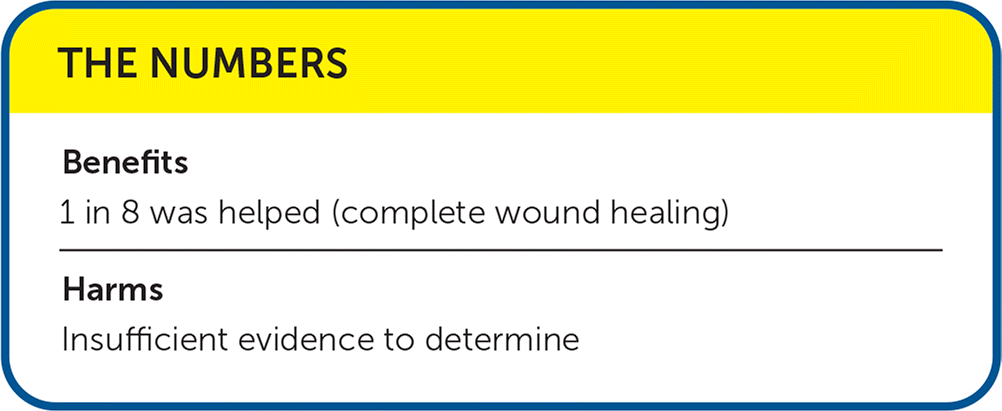
A Collaboration of TheNNT.com and AFP
Hyaluronic Acid Products for Chronic Wound Healing
Am Fam Physician. 2024;109(5):online
Author disclosure: No relevant financial relationships.

Details for This Review
Study Population: Adults in any care setting (e.g., hospital, outpatient, long-term care facility, home care) who presented with pressure ulcers, leg ulcers (venous, arterial, or mixed etiology), and diabetic foot ulcers
Efficacy End Points: Primary outcomes: complete wound and ulcer healing, time to complete wound healing; secondary outcomes: health-related quality of life; pain; wound recurrence rate; change in wound size and area
Harm End Points: Adverse events

| Benefits |
| 1 in 8 was helped (complete wound healing) |
| Harms |
| Insufficient evidence to determine |
Narrative: Chronic wounds are defined as wounds that do not heal as expected. They are extremely common worldwide and are often related to underlying disease (e.g., diabetes mellitus, vascular disease), can decrease quality of life, and are costly to manage.1 Some evidence suggests that application of hyaluronic acid, most commonly in an aqueous gel formulation, to chronic wounds may promote healing during the inflammation and granulation phases of wound healing.2 Hyaluronic acid is proposed to maintain a moist wound environment that helps cell migration in the wound bed. This process is thought to reduce scarring and fibrosis, improve angiogenesis, and reduce overall inflammation.2–5
Subscribe
From $165- Immediate, unlimited access to all AFP content
- More than 130 CME credits/year
- AAFP app access
- Print delivery available
Issue Access
$59.95- Immediate, unlimited access to this issue's content
- CME credits
- AAFP app access
- Print delivery available

